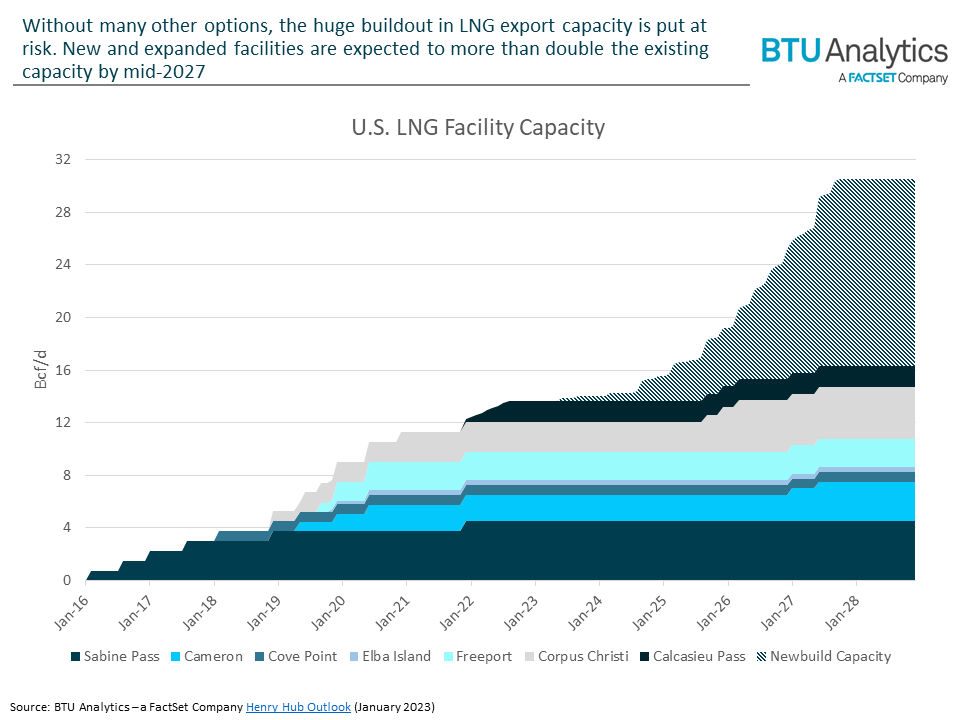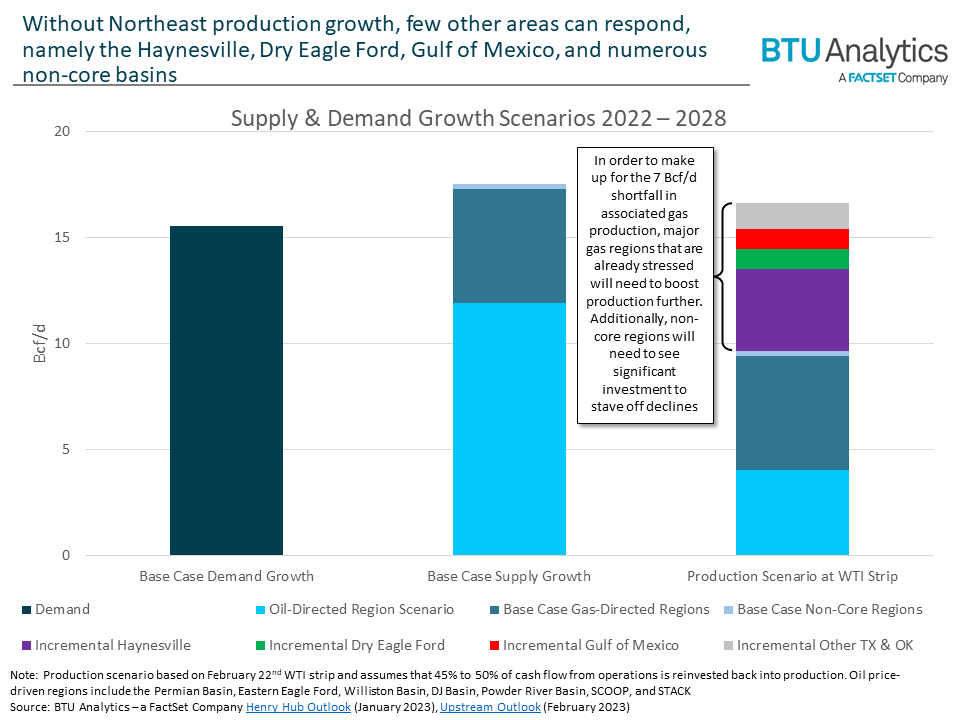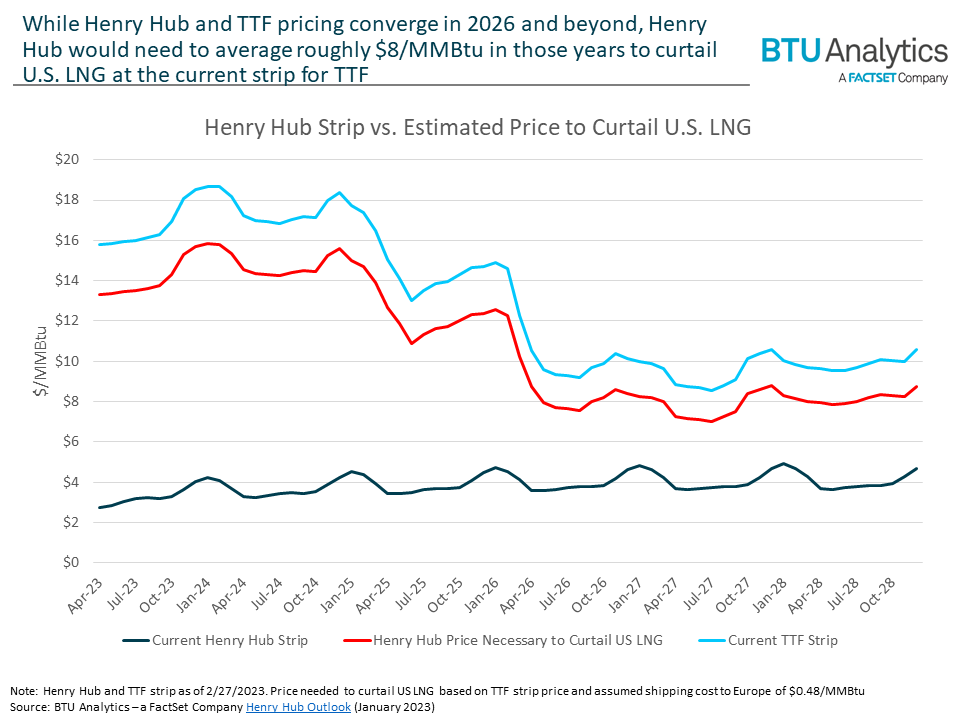Yesterday, BTU Analytics – a FactSet Company put together a webinar to shed some light on the current and future state of the U.S. natural gas supply and demand balance. A number of factors go into the makeup of this picture, namely LNG capacity buildouts over the course of the next several years, the supply contribution from associated gas, and the levels of activity in gas price-driven plays required to balance the market. After taking all these factors into account, BTU Analytics was confronted by the following questions: if oil prices fall, will associated gas production from oil-driven regions be enough to meet the impending ramp up of natural gas demand? If not, how else will the U.S. natural gas market achieve balance?
Let’s start with LNG and the state of natural gas demand. BTU Analytics expects U.S. natural gas demand to grow substantially over the next five years, with LNG being the most significant driver of that growth. In fact, BTU Analytics sees current LNG facility capacity potentially doubling from 13.6 Bcf/d as of January 2023 to over 30 Bcf/d by late-2027.

However, as pipeline capacity constraints and declining undrilled inventory issues persist, BTU Analytics does not expect that gas-driven regions, like the Northeast, Haynesville, or Dry Eagle Ford, will meet the majority of this new demand, as outlined in the Upstream Outlook. Instead, natural gas supply growth will largely come from oil-driven regions in the form of associated gas, or gas that comes as a by-product of oil production. So, while associated gas is a culprit in today’s low-Henry Hub price environment, the importance of associated gas in the long run cannot be understated, as shown in the chart below.

It is important to note that BTU Analytics’ forecast remains bullish to WTI through 2028, averaging near $79/bbl through 2028, compared to current WTI strip pricing, which averages closer to $67/bbl over the same period. Should oil prices fall below BTU Analytics’ base case, as illustrated in the production case shown above, then the U.S. would find itself in an untenable supply-demand imbalance.
With BTU Analytics modeling a 7 Bcf/d shortfall in associated gas production should oil prices decline, how else can the market reach balance? One way would be for major gas-driven regions, as well as non-core regions, to boost production, as shown in the chart below. However, as these regions do so, they run the risk of exacerbating already stressed plays by nearly exhausting low-breakeven acreage and having production vastly overwhelm existing and planned pipeline capacity.

One other way that market balance could be achieved in the face of insufficient associated gas production would be if Henry Hub pricing rose to the point that the costs of producing and shipping LNG from the U.S. to Asia and/or Europe converged. This level of pricing, which is $8/MMBtu Henry Hub in 2026 and onward at the current TTF strip price, would likely curtail demand from incremental LNG as offtakers likely begin canceling shipments.

In all, the future of the U.S. natural gas market and its balance remain far from certain. Be sure to check in with BTU Analytics – a FactSet Company as we continue to analyze these market dynamics, and others, in our numerous oil and gas offerings, such as the Gas Basis Outlook, Henry Hub Outlook, Oil Market Outlook, and Upstream Outlook. Also, follow the link here for a recording of the March 1 webinar.








